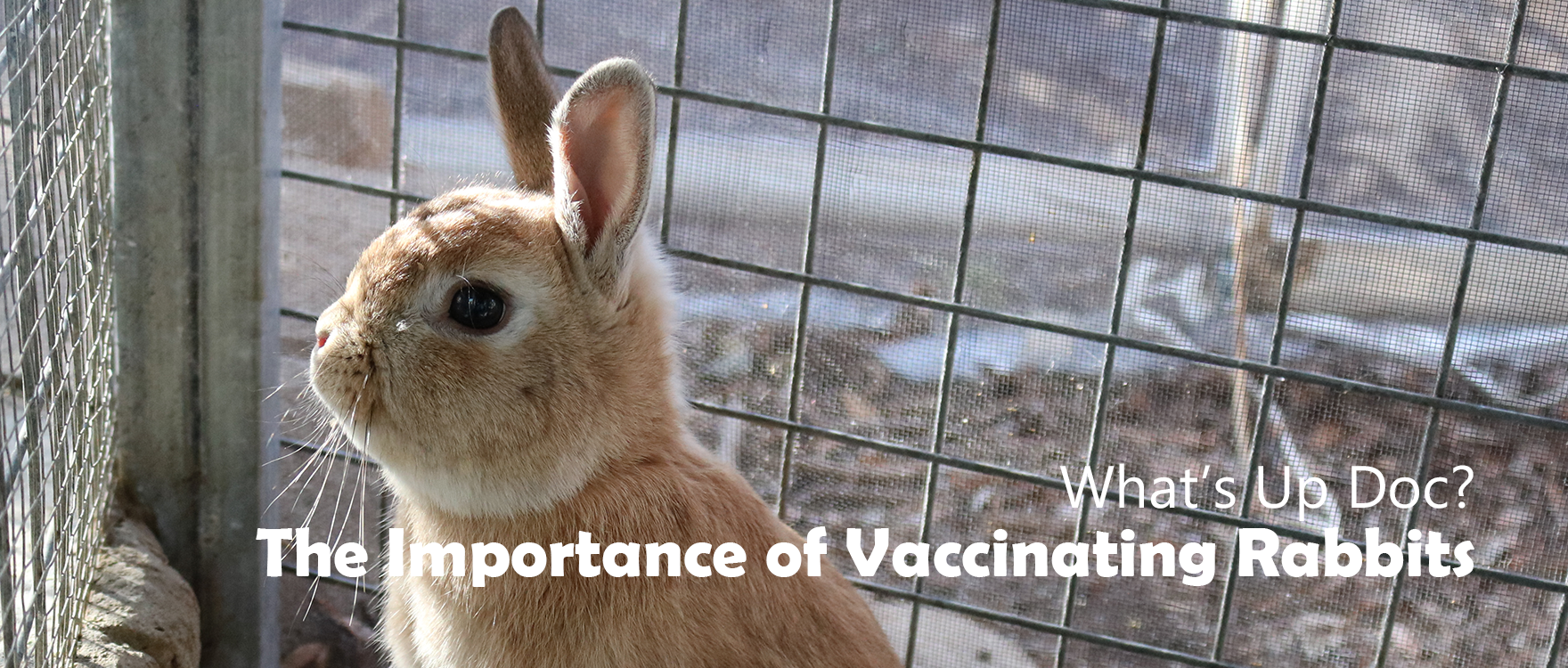Vaccinations are not only for cats and dogs (and people). They are also for rabbits. There are a couple of very nasty diseases (myxomatosis and calicivirus) that have been introduced to Australia to control our wild rabbit population. Unfortunately, these viruses do not differentiate between our pet bunnies and their wild counterparts. There is currently no vaccine for myxomatosis in Australia, but you can vaccinate your rabbit against calicivirus … and doing so might just save their life!
What is the concern with rabbit calicivirus?
Rabbit calicivirus, also known as rabbit haemorrhagic disease virus, is a highly contagious infection that can cause sudden death in rabbits. Just like COVID, there are multiple strains and variants. The first strain (RHDV1) was introduced to Australia in 1996. A second strain (RHDV2) was first detected in Australia in 2015. Both strains cause disease by damaging a rabbit’s internal organs, particularly the liver. Early signs of disease in rabbits are lethargy and loss of appetite. The disease progresses quickly, with death from liver failure plus uncontrolled clotting/ bleeding sometimes occurring before any clinical signs are noted. The mortality (death) rate in unvaccinated rabbits is very high.
How is rabbit calicivirus transmitted?
Rabbit calicivirus can be transmitted directly from rabbit to rabbit by contact with secretions or faeces. Because the virus particles can survive a long time in the environment, indirect transmission can also occur through contact with contaminated surfaces, equipment, food, water, or clothing. Importantly, rabbit calicivirus can also be transmitted by insects such as mosquitoes, flies, and fleas.
Which rabbits are at risk from calicivirus?
The short answer is that all rabbits are at risk. The RSPCA ACT recently had three rabbits with confirmed RHDV2 infection that was transmitted from the wild rabbit population most likely via mosquitoes. Because the disease is circulating in wild rabbits, and because mosquitoes can get anywhere (as anyone who has been keep awake in bed by their high-pitched buzzing can attest), even indoor only rabbits are potentially at risk of contracting calicivirus.
What vaccines are available for rabbit calicivirus?
There are two vaccines available in Australia for rabbit calicivirus. Cylap RCP has been the mainstay of vaccination for over 20 years, and is targeted against RHDV1. More recently, Filavac vaccine, which is targeted against both RHDV1 and RHDV2, became available (after considerable lobbying by rabbit veterinarians and the Australian Veterinary Association).
Which vaccine is best?
The three rabbits who recently contracted (and died from) RHDV2 at the RSPCA ACT had all been vaccinated with Cylap RCD. For this reason, the RSPCA ACT now strongly advocates for the use of the Filavac vaccine in all domestic rabbits in the ACT region. This vaccine starts to protect your pet within 7 days, and only requires a booster every 12 months.
What else can you do to protect your pet?
There are several measures besides vaccination that you can take that will help keep your pet rabbit safe from not only calicivirus, but also other infectious diseases. These include: mosquito proofing their enclosure as much as possible; regularly disinfecting equipment and surfaces using a 10% bleach solution (100ml bleach+ 900ml water); and quarantining any new rabbits for 7-14 days before introducing them to your current pets.
Disclaimer: The information and advice in this post is general in nature. It is not intended as a substitute for tailored health care advice from your regular veterinarian.



